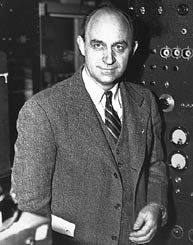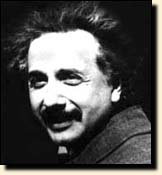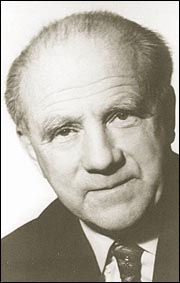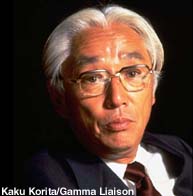
| 
| 
Hi!
This is my Profile:-
Name : Jayaraman Ganesh
Date of Birth : Septemeber 15, 1969
Place of Birth : Chennai (then Madras), India
Nationality : Indian
Hobbies : reading, writing, surfing the net, TV, music, sports, making friends
My Heroes :- Leonard Euler, Albert Einstein, Enrico Fermi, Werner Heisenberg, Mahatma Gandhi, Akio Morita, Abraham Lincoln................

There are many celebrities i admire......
The list is endless, but I'll try to put here as many as I can remember.....
Leonardo Di Caprio, Muttiah Muralitharan, Andre Agassi, Sanath Jayasuriya, Shah Rukh Khan, Kamalahasan, Boris Becker, Amitabh Bachchan, Kishoreda, Stephen Spielberg....
and among the girls/ladies......
Anna Kournikova, Celine Dion, Salma Hayek, Manisha Koirala, Vasundhara Das, Aishwarya Rai, Steffi Graf, Kate Winslet.......
brain teaser
Seven out of ten people wouldn't be able to solve this teaser... are u among the
elite 30% of the human race?
those who have the determination to succeed? those with perseverence?
FACTS
1. There are 5 houses in 5 different colors.
2. In each house lives a person of a different nationality
3. These 5 owners drink a certain beverage, smoke a certain brand of cigarette
and keep a certain pet
4. No owners have the same pet, smoke the same brand of cigarette or drink the
same drink.
HINTS
1.The Briton lives in a red house2. The Swede keeps dogs as pets
3. The Dane drinks tea4. The green house is on the left of the white house
5. The green house owner drinks coffee
6. The person who smokes Pall Mall rears birds
7. The owner of the yellow house smokes Dunhill
8. The man living in the house right in the center drinks milk
9. The Norwegian lives in the first house
10. The man who smokes Blend lives next to the one who keeps cats
11. The man who keeps horses lives next to the man who smokes Dunhill
12.The owner who smokes Blue Master drinks beer13. The German smokes Prince
14. The Norwegian lives next to the Blue house
15. The man who smokes Blend has a neighbor who drinks water
In addition to the various items listed above, FISH is also there in one of the
houses. Can you FISH out in which house the FISH is?

TEASERS GALORE
1. 'How quickly can you find out what is so unusual
about this paragraph? It looks so ordinary that you
would think that nothing is wrong with it at all, and,
in fact, nothing is. But it is unusual. Why? If you
study it and think about it, you may find out, but I
am not going to assist you in anyway. You must do it
without coaching. No doubt, if you work at it for
long, it will dawn on you. Who Knows? Go to work and
try your skill. Par is about half an hour.'
Quimby Sereye, the editor of a local magazine, is at
his wit's end. The above puzzle was submitted without
an answer, and Quimby's been trying to solve it for
over a week. Day and night, wherever he goes, Quimby's
been studying it without success. Can you solve this
perplexing problem and bring tranquility back into
Quimby's life?
2. Trusting Ned Armstrong, the owner of Ned's
Wonderful World of Sports, made his first sale the
other day to a somewhat suspicious looking gentleman.
The customer purchased a package of golf balls for $12
and paid Ned with a $20 bill. Ned was all out of
singles so he went next door to the bakery to change
it; then he gave the customer his purchase and $8 in
change. Ten minutes later the baker came in
complaining that Ned had given him a counterfeit bill.
Ned took back the bogus twenty and gave the baker a
$20 bill from the register. Now, the big question in
Ned's mind was just how much money had he lost on his
first sale? Keep in mind that the marup on a package
of golf balls is 100 percent.
3. The other day Grand Slam Cooper, proprietor of the
Hit & Miss Sport Shop, was checking out a new shipment
of tennis balls when he noticed that each of the three
crates, labeled 'Yellow Tennis Balls', 'White Tennis
Balls' and 'White & Yellow Tennis Balls', was
mislabeled. Being a puzzler of great renown he came up
with a problem that has stumped everyone so far. It
goes like this : Take one tennis ball out of anyone of
the three crates without looking into the crate or
into any of the other crates. With only the color of
the one tennis ball to guide you, correctly label each
of the crates.
See if you can net the answer in ten minutes. No
overtime permitted.
4. Many years ago, so the tale goes, two good old
boys, Billy Bones and Pester Pew, got in an argument
down at the Bucket O'Blood grog shop. It seems that
Billy came in with an empty five-gallon cask and asked
Pester to put four gallons of his rotgut rum in it.
Unfortunately the only measure in the house was an old
three-gallon pewter jug. Try as they might Pester and
Billy just couldn't figure out a way to measure out
exactly four gallons from the rum vat using these two
receptacles and their frustration soon evolved into
mayhem. If you had been there, could you have solved
their problem?
5. J. Wellington Moneybags, that Prince of Gamblers,
is back with an interesting betting proposition for
you. He claims that 1981 $100 bills are worth more
than 1980 $100 bills. Do you think that he's wrong?
He's willing to wager you a $100 that he can prove it!

do you know?
1. what are dromedary and bactrian?
2. what are deimos and phobos?
3. what are red shift and blue shift?
4. what are panophobia and thanatophobia?
5. what are equinoxes and solstices?
6. what are neutrinos and postirons?
7. how are permutations different from combinations?
8. what are perfect numbers and amicable numbers?
9. what are gogool and gogoolplex?
10. what are isotopes and isobars? 
ANNA KOURNIKOVA :-
THE MOST BEAUTIFUL GIRL GOD EVER MADE!
e mail to me, if u disagree:-
jayaraman_ganesh@yahoo.com 
Salma Hayek : The Mexican Goddess
She certainly is!!!

Vasundhara Das.............
Every friend of mine knows.......
I am her great fan..........
I have no words to describe her........

Can you think of one man who wouldn't admire Sharon Stone??? | 
| 
|

| 
| 
AISHWARYA RAI:-
THE EYE BANK ASSOCIATION OF INDIA's NUMBER 1 AMBASSADOR
BEAUTY IS BEAUTY DOES
WELL DONE, AISHWARYA, WE LOVE YOU 
MANISHA KOIRALA
THE PRINCESS........ISN'T SHE????
SHE'S BEAUTIFUL....AND SHE'S IMMENSELY TALENTED......
SHE'S VERY CLOSE TO A PERFECT GIRL...AND SHE'S HUMAN.....
A REMARKABLE PERSON...... 
Kate Winslet :-
Beauty and Brain............
She's got it both............
in abundance......... 
Akio Morita
Almost exactly five years ago, Akio Morita--Mr. Sony--fell to the ground during a game of tennis. The co-founder and chairman of the board had suffered a stroke. He has since been in a wheelchair. This is particularly sad, as Morita had never been able to sit still and relax. At 72, he was playing tennis at 7 a.m. each Tuesday. I know this well because I would practice on the court next to him. My tennis, however, was very different from his. I played with an instructor, and if I was tired, I would just take a break. Not him. He challenged everybody, including young athletes.
This was in keeping with a man who created one of the first global corporations. He saw long before his contemporaries that a shrinking world could present enormous opportunities for a company that could think beyond its own borders, both physically and psychologically. And he pursued that strategy with his relentless brand of energy in every market, particularly the U.S. It is notable that this year, according to a Harris survey, Sony is rated the No. 1 brand name by American consumers, ahead of Coca-Cola and General Electric.
The best way to describe Morita's extraordinary drive is to scan his schedule for the two-month period immediately preceding his stroke. He took trips from his home base in Tokyo to New Jersey, Washington, Chicago, San Francisco, Los Angeles, San Antonio, Dallas, Britain, Barcelona and Paris. During that time he met with Queen Elizabeth II, General Electric chief Jack Welch, future French President Jacques Chirac, Isaac Stern and many other politicians, bureaucrats and business associates. He attended two concerts and a movie; took four trips within Japan; appeared at eight receptions; played nine rounds of golf; was guest of honor at a wedding ceremony; and went to work as usual for 17 days at Sony headquarters. Morita's schedule had been decided on more than a year in advance. Whenever there was a small opening, Morita would immediately and strategically fill it by arranging a meeting with someone he wanted to become acquainted with or catch up with. Unlike so many executives who remove themselves from the rest of the corporate pyramid, he was always in the middle of the action.
Morita had been groomed since the third grade to become the successor of a 14-generation family business: a prominent sake-brewing company in Nagoya. In true entrepreneurial spirit, however, he traded this life of comfort and privilege for the uncertainties of a start-up, called Tokyo Telecommunications Engineering, Inc., in the rubble of postwar Japan.
From the outset, Morita's marketing concept was brand-name identification and brand responsibility: that the name would instantly communicate high product quality. This is a marketing concept widely used by companies today. But at that time most companies in Japan were producing under somebody else's brand name. Pentax, for example, was making products for Honeywell, Ricoh for Savin and Sanyo for Sears.
Complementing Morita's unusual focus on brand identity were the talents of his co-founder, Masaru Ibuka, the engineering and product-design force behind Sony's inventions. The combination worked well. The two sought to provide the best available technology and quality to the consumer. One of Sony's first products was a transistor radio, produced in 1955. While the transistor was developed by Bell Labs and produced by Western Electric, it was Sony that first used it for a small pocket radio, in 1957, creating a new market in the bargain.
The radio's success led to more firsts in transistorized products, such as an 8-in. television and a videotape recorder. Sony's technological achievements in product design, production and marketing helped change the image of MADE IN JAPAN from a notion of cheap imitations to one associated with superior quality. In Morita's own words, they made Sony the Cadillac of electronics.
The creation of the name Sony highlights Morita's intuition and determination to communicate globally. He wanted a name recognizable everywhere: creative, Roman letters, short and catchy. Morita and Ibuka pored over dictionaries and found the word sonus, which in Latin means sound. In addition, the word sonny was part of the pop vernacular in America at the time, and they thought it suggested a company made up of young people with abundant energy. The combination of the two formed Sony.
Sony's globalization began in the U.S., where Morita moved his entire family in 1963. In that way he would understand Americans, their market, customs and regulations, thereby increasing the chance of his company's success. It was a brilliant decision. Not many businessmen in those days possessed such a passionate and determined business vision. In the U.S., Morita settled into a large Fifth Avenue apartment in Manhattan. He built a solid and valuable network by continually socializing and giving parties during the week, a habit he maintained throughout his career.
Morita was a workaholic, but he was also a playaholic. He followed art and music, and was a sports fanatic. In his 60s he took up wind surfing and scuba diving and started skiing to ensure good exercise through the winter. He loved to water-ski and even crafted a water-resistant microphone on a handle, connected by a wire on the ski rope to a speaker on the boat so he could relay instructions to his wife Yoshiko. He was so proud of this invention. To simply have a good time, he would invent and perfect such a product.
The Walkman is just such an invention. Morita watched as his children and their friends played music from morning until night. He noticed people listening to music in their cars and carrying large stereos to the beach and the park. Sony's engineering department was generally opposed to the concept of a tape player without a recording function (it would be added later), but Morita would not be denied. He insisted on a product that sounded like a high-quality car stereo yet was portable and allowed the user to listen while doing something else--thus the name Walkman.
Sony America considered that bad English and changed it to Soundabout for the U.S., Freestyle for Sweden and Stowaway for Britain. Morita was leery of using a different name for each country, and when sales were less than rewarding, he changed the name universally to Sony Walkman. Subsequently, the Walkman was a worldwide hit that is now featured in major dictionaries.
The man who put Sony on the global radar had a nationalist side that was both contradictory and complementary. This you can sense in reading his best seller, "Made in Japan," as well as in talking to him. When I would complain about the ambivalence, he'd grin and say, "Ohmae-san, it is the generation gap." A navy veteran, he returned from service to a Japanese economy that had been destroyed by the war, so for a long time he maintained a Japan-first frame of mind. His initial intentions were simply to make a contribution toward rebuilding his country from the ashes of the war.
But he eventually adopted a more international point of view and, in the 1960s, began to speak of issues, such as encouraging free trade by reducing tariffs and other barriers, that many Japanese businessmen had been reluctant to discuss for decades. He represented, very vocally, the business community of Japan, a country that had during the 1970s become the No. 2 economy in the world and could no longer be ignored by the major economic players. Some controversy resulted when he was listed as co-author of a book in 1989--"The Japan That Can Say No"--that suggested that other countries stop complaining about Japanese imports and get to work improving their own corporations. His real opinions were somewhat misrepresented by the publisher: he had intended the consensus-oriented Japanese to see that in other countries disagreement and debate were not insulting and that Japanese could argue with their business partners abroad without destroying their friendship.
But as Sony grew internationally, Morita expanded his vision. Now it was "Think globally, act locally"--that is, have a common value system that transcends national objectives; serve international customers, shareholders and employees, regardless of the origin of the company. I liked his reference to the phrase in a business context so much that I used it in my book "The Borderless World" to describe a company that is in the final stage of globalization.
In 1993, Morita was asked by Gaishi Hiraiwa, then chairman of Keidanren, to be his successor. Keidanren is the most prestigious business association in Japan, and all CEOs in Japan would like to hold an important position in the organization. Until this time, Morita had never really been accepted by the Japanese establishment as Sony was a relatively small company and didn't come from the traditional strong houses of steelmaking, public utilities and heavy industry. In the Japanese economic circle, becoming chairman of Keidanren is likened to the succession of the Emperor. As it turned out, the day of Morita's stroke, Nov. 30, 1993, was the day the succession announcement was to have taken place.
This would have been a wonderful thing for Japan in 1993, a time when the country was about to collapse into sustained recession. Morita had already been thinking about reforming Japan, and he organized discussion groups of politicians, business people and bureaucrats to talk about what would be needed. People say that Japan's current economic situation might have been very different if someone like Morita had been in a position to speak on behalf of the entrepreneurs and the dynamics of business--as opposed to begging the government to rescue industry after industry. I also believe this is the case. The great tragedy is that Japan does not have another like him.
Morita achieved more than most could imagine in one lifetime. If he had been able to read the paper reporting Sony as the No. 1 consumer brand in the U.S., he would have smiled from his beachside mansion in Oahu and said, "Of course! I told you so! After all, Sony was made in the U.S.A.!"
(Source : www.time.com)
LATERAL THINKING PUZZLES
Paul Sloane's list of Classic Lateral Thinking Puzzles
Lateral thinking puzzles are often strange situations
which require an explanation. They are solved through a dialogue between the quizmaster
who sets the puzzle and the solver or solvers who try
to figure out the answer. The puzzles as stated generally do not contain sufficient information for the solver to uncover the solution. So a key part of the
process is the asking of questions. The questions can
receive one of only three possible answers - yes, no or irrelevant.
When one line of enquiry reaches an end then another
approach is needed, often from a completely new direction. This is where the lateral thinking comes in.
Some people find it frustrating that for any puzzle it
is possible to construct various answers which fit the initial statement of the puzzle. However, for a good lateral thinking puzzle, the proper answer will be
the best in the sense of the most apt and satisfying.
When you hear the right answer to a good puzzle of this type you should want to kick yourself for not working it out!
This kind of puzzle teaches you to check your
assumptions about any situation. You need to be open-minded, flexible and creative in your questioning and able to put lots of different clues and pieces of information together. Once you reach a viable solution you keep going in order to refine it or replace it with a better solution. This is lateral thinking!
This list contains some of the most renowned and
representative lateral thinking puzzles as well as some of those which crop up most frequently on the rec.puzzles newgroup
The Puzzles
1. The man in the Elevator
A man lives on the tenth floor of a building. Every
day he takes the elevator to go down to the ground floor to go to work or to go shopping. When he returns he takes the elevator to the seventh floor and walks up the stairs to reach his apartment on the tenth floor.He hates walking
so why does he do it?
This is probably the best known and most celebrated of
all lateral thinking puzzles. It is a true classic. Although there are many possible solutions which fit the initial conditions, only the canonical answer is
truly satisfying.
2. The Man in the Bar
A man walks into a bar and asks the barman for a glass
of water. The barman pulls out a gun and points it at the man. The man says 'Thank you' and walks out.
This puzzle has claims to be the best of the genre. It
is simple in its statement, absolutely baffling and yet with a completely satisfying solution. Most people struggle very hard to solve this one yet they like
the answer when they hear it or have the satisfaction
of figuring it out.
3. The Man who Hanged Himself
Not far from Madrid, there is a large wooden barn. The
barn is completely empty except for a dead man hanging from
the middle of the central rafter. The rope around his neck is ten feet long and his feet are three feet off the ground. The nearest wall is 20 feet away from the man. It
is not possible to climb up the walls or along the
rafters. The man hanged himself. How did he do it?
4. Death in a Field
A man is lying dead in a field. Next to him there is
an unopened package. There is no other creature in the field. How did he die?
5. Anthony and Cleopatra
Anthony and Cleopatra are lying dead on the floor of a
villa in Egypt. Nearby is a broken bowl. There is no mark on either of their bodies and they were not poisoned. How did they die?
6. The Coal, Carrot and Scarf
Five pieces of coal, a carrot and a scarf are lying on
the lawn. Nobody put them on the lawn but there is a perfectly logical reason why they should be there. What is it?
7.Trouble with Sons
A woman had two sons who were born on the same hour of
the same day of the same year. But they were not twins. How could this be so?
8. Push that Car
A man pushed his car. He stopped when he reached a
hotel at which point he knew he was bankrupt. Why?
9. The Arm of the Postal Service
One day a man received a parcel in the post. Carefully
packed inside was a human arm. He examined it, repacked it and then sent it on to another man. The second man also carefully examined the arm before taking it
to the woods and burying it. Why did they do this?
This one probably has more variations than any other.
A great one to puzzle out. It requires plenty of good questions.
10. Heaven
A man died and went to Heaven. There were thousands of
other people there. They were all naked and all looked as they did at the age of 21. He looked around to see if there was anyone he recognised. He saw a couple and he knew immediately that they were Adam and Eve.How did he know?
11. A man rode into town on Friday. He stayed for
three nights and then left on Friday. How come?
A silly one - but it is surprisingly popular.
12. A man was walking downstairs in a building when he
suddenly realized that his wife had just died. How?
SOLUTIONS:-
1.The man is (of course) a dwarf. Variants of this
puzzle include the clue that on rainy days he goes up in the elevator to the tenth floor (he uses his umbrella!)
2. The man had hiccups. The barman recognized this
from his speech and drew the gun in order to give him a shock. It worked and cured the hiccups - so the man no longer needed the water.
The is a simple puzzle to state but a difficult one to
solve. It is a perfect example of a seemingly irrational and
incongruous situation having a simple and complete explanation. Amazingly this classic puzzle
seems to work in different cultures and languages.
3. He climbed on a block of ice which has since
melted. This one is often stated with the clue of a puddle of water, but surely this is too much assistance. It is one of several problems which depend on the change of state of water (snow or ice to water or steam).
4. The man had jumped from a plane but his parachute
had failed to open. It is the unopened package.
This is sometimes given with the following rather
elegant clue - as he approached the centre of the field he knew he was going to die. This is
another of the top classics which is right up there
with 'The Man in the Bar'. If the solver is thinking along the wrong lines (i.e. in the two dimensions of the ground) then the lateral jump to the third dimension can be tough to make.
5. Anthony and Cleopatra were goldfish whose bowl was
knocked over by a clumsy dog.
This is one of a set of puzzles which deceive by using
human names for animals. This is not a very satisfactory basis for a good puzzle but despite that, the puzzle has enduring popularity.
6. They were used by children who made a snowman. The
snow has now melted.
Another change of state puzzle. After this you should
be on the look-out for them!
7. They were two of a set of triplets (or quadruplets
etc.) This simple little puzzle stumps many people. They try
outlandish solutions involving test-tube babies or surrogate
mothers. Why does the brain search for complex solutions when there is a much simpler one available?
8. He was playing Monopoly.
9. The three men had been stranded on a desert island.
Desperate for food, they had agreed to amputate their left arms in order to eat them. They swore an oath that each would have his left arm cut off. One of
them was a doctor and he cut the arms off his two
companions. They were then rescued. But his oath was still binding so he later had to have his arm amputated and sent to his colleagues. This is often told with a further twist whereby a doctor pays a tramp a large sum in order to amputate the tramp's arm which the doctor then
sends to another man who inspects it etc. This
variation can make for a long night of questioning!
10. He recognized Adam and Eve as the only people
without navels. Because they were not born of women, they had never had umbilical cords and therefore they never had navels. This one seems perfectly logical but it can sometimes spark fierce theological arguments!
11. The man's horse was called Friday.
OK, so this is really a schoolboy riddle but people
keep asking it!
12. The man had visited his wife in hospital. She was
on a life-support machine. As he was walking down the stairs all the lights went out.
There had been a power cut and the emergency back-up
systems had failed. He knew that she had died.
Enrico Fermi
If the 19th century was the century of
chemistry, the 20th was the century of physics. The
burgeoning science supported such transforming
applications as medical imaging, nuclear reactors,
atom and hydrogen bombs, radio and television,
transistors, computers and lasers. Physical knowledge
increased so rapidly after 1900 that theory and
experiment soon divided into separate specialties.
Enrico Fermi, a supremely self-assured Italian
American born in Rome in 1901, was the last great
physicist to bridge the gap. His theory of beta decay
introduced the last of the four basic forces known in
nature (gravity, electromagnetism and, operating
within the nucleus of the atom, the strong force and
Fermi's "weak force"). He also co-invented and
designed the first man-made nuclear reactor, starting
it up in a historic secret experiment at the
University of Chicago on Dec. 2, 1942. In the famous
code that an administrator used to report the success
of the experiment by open phone to Washington, Fermi
was "the Italian navigator" who had "landed in the new
world."
He had personally landed in the new world four years
earlier, with a newly minted Nobel Prize gold medal in
his pocket, pre-eminent among a distillation of
outstanding scientists who immigrated to the U.S. in
the 1930s to escape anti-Semitic persecution in
Hitler's Germany and Mussolini's Italy--in Fermi's
case, of his Jewish wife Laura.
A dark, compact man with mischievous gray-blue eyes,
Fermi was the son of a civil servant, an administrator
with the Italian national railroad. He discovered
physics at 14, when he was left bereft by the death of
his cherished older brother Giulio during minor throat
surgery. Einstein characterized his own commitment to
science as a flight from the I and the we to the it.
Physics may have offered Enrico more consolatory
certitudes than religion. Browsing through the
bookstalls in Rome's Campo dei Fiori, the grieving boy
found two antique volumes of elementary physics,
carried them home and read them through, sometimes
correcting the mathematics. Later, he told his older
sister Maria that he had not even noticed they were
written in Latin.
He progressed so quickly, guided by an engineer who
was a family friend, that his competition essay for
university admission was judged worthy of a doctoral
examination. By 1920 he was teaching his teachers at
the University of Pisa; he worked out his first theory
of permanent value to physics while still an
undergraduate. His only setback was a period of
postdoctoral study in Germany in 1923 among such
talents as Wolfgang Pauli and Werner Heisenberg, when
his gifts went unrecognized. He disliked pretension,
preferring simplicity and concreteness, and the
philosophic German style may have repelled him. "Not a
philosopher," the American theorist J. Robert
Oppenheimer later sketched him. "Passion for clarity.
He was simply unable to let things be foggy. Since
they always are, this kept him pretty active." He won
appointment as professor of theoretical physics at the
University of Rome at 25 and quickly assembled a small
group of first-class young talents for his
self-appointed task of reviving Italian physics.
Judging him infallible, they nicknamed him "the Pope."
The Pope and his team almost found nuclear fission in
1934 in the course of experiments in which, looking
for radioactive transformations, they systematically
bombarded one element after another with the newly
discovered neutron. They missed by the thickness of
the sheet of foil in which they wrapped their uranium
sample; the foil blocked the fission fragments that
their instruments would otherwise have recorded. It
was a blessing in disguise. If fission had come to
light in the mid-1930s, while the democracies still
slept, Nazi Germany would have won a long lead toward
building an atom bomb. In compensation, Fermi made the
most important discovery of his life, that slowing
neutrons by passing them through a light-element
"moderator" such as paraffin increased their
effectiveness, a finding that would allow releasing
nuclear energy in a reactor.
If Hitler had not hounded Jewish scientists out of
Europe, the Anglo-American atom bomb program sparked
by the discovery of fission late in 1938 would have
found itself shorthanded. Most Allied physicists had
already been put to work developing radar and the
proximity fuse, inventions of more immediate value.
Fermi and his fellow emigres--Hungarians Leo Szilard,
Eugene Wigner, John von Neumann and Edward Teller,
German Hans Bethe--formed the heart of the bomb squad.
In 1939, still officially enemy aliens, Fermi and
Szilard co-invented the nuclear reactor at Columbia
University, sketching out a three-dimensional lattice
of uranium slugs dropped into holes in black, greasy
blocks of graphite moderator, with sliding
neutron-absorbing cadmium control rods to regulate the
chain reaction. Fermi, still mastering English, dubbed
this elegantly simple machine a "pile."
The work moved to the University of Chicago when the
Manhattan Project consolidated its operations there,
culminating in the assembly of the first full-scale
pile, CP-1, on a doubles squash court under the stands
of the university football field in late 1942. Built
up in layers inside wooden framing, it took the shape
of a doorknob the size of a two-car garage--a
flattened graphite ellipsoid 25 ft. wide and 20 ft.
high, weighing nearly 100 tons. Dec. 2 dawned to
below-zero cold. That morning the State Department
announced that 2 million Jews had perished in Europe
and 5 million more were in danger; American boys and
Japanese were dying at Guadalcanal. It was cold inside
the squash court, and the crowd of scientists who
assembled on the balcony kept on their overcoats.
Fermi proceeded imperturbably through the experiment,
confident of the estimates he had charted with his
pocket slide rule. At 11:30 a.m., as was his custom,
he stopped for lunch. The pile went critical in
midafternoon with the full withdrawal of the control
rods, and Fermi allowed himself a grin. He had proved
the science of a chain reaction in uranium; from then
on, building a bomb was mere engineering. He shut the
pile down after 28 minutes of operation. Wigner had
thought to buy a celebratory fiasco of Chianti, which
supplied a toast. "For some time we had known that we
were about to unlock a giant," Wigner would write.
"Still, we could not escape an eerie feeling when we
knew we had actually done it."
From that first small pile grew production reactors
that bred plutonium for the first atom bombs. Moving
to Los Alamos in 1944, Fermi was on hand in the New
Mexican desert for the first test of the brutal new
weapon in July 1945. He estimated its explosive yield
with a characteristically simple experiment, dropping
scraps of paper in the predawn stillness and again
when the blast wind arrived and comparing their
displacement.
Fermi died prematurely of stomach cancer in Chicago in
1954. He had argued against U.S. development of the
hydrogen bomb when that project was debated in 1949,
calling it "a weapon which in practical effect is
almost one of genocide." His counsel went unheeded,
and the U.S.-Soviet arms race that ensued put the
world at mortal risk. But the discovery of how to
release nuclear energy, in which he played so crucial
a part, had long-term beneficial results: the
development of an essentially unlimited new source of
energy and the forestalling, perhaps permanently, of
world-scale war.
BORN Sept. 29, 1901, Rome
1926 Develops Fermi-Dirac statistics
1932 Writes key paper on beta decay
1934 Discovers slow neutrons
1938 Awarded Nobel Prize for Physics
1939 Escapes Europe and moves to the U.S.
1942 Achieves man-made nuclear chain reaction
1949 Argues against development of the H-bomb
1954 Dies in Chicago
What is a Fermi Question?
A Fermi question requires estimation of physical
quantities to arrive at an answer.
Throughout his work, Fermi was legendary for being
able to figure out things in his head, using
information that initially seems too meager for a
quantitative result. He used a process of "zeroing in"
on problems by saying that the value in question was
certainly larger than one number and less than some
other amount. He would proceed through a problem in
that fashion and, in the end, have a quantified answer
within identified limits.
In a Fermi question, the goal is to get an answer to
an order of magnitude (typically a power of ten) by
making reasonable assumptions about the situation, not
necessarily relying upon definite knowledge for an
"exact" answer.
A Fermi question is posed with limited information
given.
How many water balloons would it take to fill the
school gymnasium?
How many piano tuners are there in New York City?
What is the mass in kilograms of the student body in
your school?
A Fermi question requires that students ask many more
questions.
How big is a water balloon?
What are the approximate dimensitons dimensions of the
gym?
What measurment must be estimated using the dimensions
of the gym?
... and the list goes on.
A Fermi question demands communication.
A Fermi question utilizes estimation.
A Fermi question emphasizes process rather than "the"
answer.
Example 1:
HOW MANY PIANO TUNERS ARE IN NEW YORK CITY?
How might one figure out such a thing?? Surely the
number of piano tuners in some way depends on the
number of pianos. The number of pianos must connect in
some way to the number of people in the area.
Approximately how many people are in New York City?
10,000,000
Does every individual own a piano?
No
Would it be reasonable to assert that "individuals
don't tend to own pianos; families do?
Yes.
About how many families are there in a city of 10
million people?
Perhaps there are 2,000,000 families in NYC.
Does every family own a piano?
No.
Perhaps one out of every five does.
That would mean there are about 400,000 pianos in NYC.
How many piano tuners are needed for 400,000 pianos?
Some people never get around to tuning their piano;
some people tune their piano every month. If we assume
that "on the average" every piano gets tuned once a
year, then there are 400,000 "piano tunings" every
year.
How many piano tunings can one piano tuner do?
Let's assume that the average piano tuner can tune
four pianos a day. Also assume that there are 200
working days per year. That means that every tuner can
tune about 800 pianos per year.
How many piano tuners are needed in NYC?
The number of tuners is approximately 400,000/800 or
500 piano tuners.
Try it yourself.
Use different assumptions for various factors. It is
unlikely that you can justify an answer greater than a
factor of 10 or smaller than a factor of 10 from the
number originally obtained; that is to say, there are
probably not more than 5000 tuners and surely no less
than 50. Thus the answer obtained is good to within an
"order of magnitude".
Example 2:
HOW MANY JELLY BEANS FILL A ONE-LITER BOTTLE?
As with any Fermi question, there are multiple
directions from which the problem can be approached.
Solution 1 illustrates a more algorithmic approach;
solution 2 is more intuitive. In both solutions, it is
understood that one liter is equal to 1000 cubic
centimeters.
Solution 1
What is the approximate size a jelly bean?
An examination of a jelly bean reveals that is
approximately the size of a small cylinder that
measures about 2 cm long by about 1.5 cm in diameter.
Do jelly beans "completely fill the liter bottle"?
The irregular shape of jelly beans result in them not
being tightly packet; approximately 80% of the volume
of the bottle is filled
The number of jelly beans is the occupied volume of
the jar divided by the volume of a single jelly bean
Number of beans = (Occupied Volume of Jar)/(Volume of
1 Bean)
The volume of one jelly bean is approximated by the
volume of a small cylincer 2 cm long and 1.5 cm in
diameter
Volume of 1 Jelly Bean = h(pi)(d/2)^2 = 2cm x 3
(1.5cm/2)^2 = 27/8 cubic centimers
Thus the approximate number of beans in the jar is
Number of beans = (.80 x 1000 cubic centimeters)/(27/8
cubic centimeters) = approx 240 jelly beans
Have your students try it out with jelly beans and a
liter bottle or jar. If you don't have a liter jar,
use a quart jar (.95 liter)
Solution 2
Have your students construct or visualize a paper cube
that measures 1 cubic inch.
How many jelly beans will fit in the cube?
Approximately 4
How many cubic inches are there in 1 liter?
1 inch = approx 2.54 centimeters. Therefore 1 cubic
inch = approx. 16 cubic centimeters
1000 cubic centimeters/16 cubic centimeters = approx
62 cubic inches in one liter.
How many jelly beans are there in the one liter
container?
62 x 4 = approximately 248 jellybeans
e Certain numbers hold celebrity status in mathematics. One such number is pi, the ratio of the circumference to the diameter in any circle. Like other celebrities, pi has become a part of our popular culture. In cartoons,
the symbol is often used to indicate the presence of smart people, or even as an icon for mathematics itself. Indeed, many people who know very little else about mathematics are able to recite, from memory, several of the digits of pi's infinite, aperiodic, decimal expansion,
pi = 3.1415926536...
Ancient and venerable, pi has the aura of a very important number.
And yet, even in your most generous recollections, you've probably experienced only an occasional need to compute the circumference of a circle from its diameter, or vice versa. Why is pi so important?
The answer comes from pi's central place in the study of trigonometry. Trigonometry is used to model all types of repeating, periodic phenomena in nature, and the archetype
of such repeating, periodic phenomena is going around in a circle. If you haven't studied trigonometry, you may have mistaken pi's cultural ubiquity for a kind of importance, as we often do with celebrities.
If you go on from trigonometry to study calculus, there is another irrational number whose role is equal in importance to that of pi, though it is much less widely known in the popular culture. Among the mathematics in-crowd, however,
this other celebrated constant is regarded with a special fascination. A comparative youngster to the grandfatherly pi, there is a calculated mystery about it.
The number is e, with a decimal expansion that begins:
e =
2.71828182845904523536...
The number was first introduced by the mathematician
John Napier, who used it in the development of his theory of logarithms in the early 1600s. His version of natural logarithms were abandoned almost immediately, however, in favor of common logarithms with a base of ten,
and it was left to Leonhard Euler(1707-1783) to discover many of the number's remarkable properties. Euler was the first to use the symbol e . Despite appearances, it is unlikely that Euler named the number after himself, even
though it is still sometimes referred to as Euler's number.
( This term can be confusing: There is another, unrelated number usually called Euler's constant. )
As we will see in the first example, the number has a rightful claim to being the base for exponential functions, and so it has been suggested that Euler meant e to stand for exponential. The truth may be even more prosaic:
Euler was using the letter a in some of his other mathematical work, and e was the next vowel.
The MNEMONIC to remember the value of 'e':-
To
express
e
remember
to
memorize
a
sentence
to
simplify
this.
There are a lot of interesting properties of "e", as there are with Pi. Some of them are pretty advanced,
and some of them are easy to write down but hard to prove.
"e" is a number, just like Pi, and it has the value
2.718281828459045235306....
So e is not the same as Pi, which is about
3.14159265358979323846....
But while lots of people know Pi, not so many know about e.
Now, what exactly is so special about e? Does it have a geometric meaning like Pi (which is the ratio of the circumference of a circle to its diameter)?
Why does e=2.71828... instead of, say, 17.391526381? Or -592?
Or Pi/2
(which it isn't)? Perhaps you've been told that the
decimal digits of Pi never end, and they never repeat like
22/7 = 3.142857142857142857....
Well, e is just like Pi in this
respect; if you keep going, it never stops,
and it never repeats.
What sets them apart from fractions like 3/4 and -65/11, is just this fact, which is more commonly known as irrationality. Fractions are
*rational*,
while numbers like the square root of 2, Pi, and e are
*irrational*.
Still, we haven't really talked about what e is useful for. To get to this,
we need to talk about logarithms. Say you have 2^x = 64
(2^x is my way
of saying "2 raised to the x power"), and you want to
solve for x.
Well,
we know that
64 = 2*32 = 2*(2*16) = 2*2*2*8 = 2*2*2*2*2*2 = 2^6, so x =
6.
How about 2^x = 5? There we're stuck, because 2^2 = 4 and 2^3 = 8
so x should be somewhere between 2 and 3 to make 2^x = 5.
There's another
way of saying what x should be, and this is called the
logarithm of 5 to
the base 2. That is, x = log[2](5); (the 2 should be
a subscript, like
a power but typed a bit below the log, so it isn't
log 10). In general,
the solution to b^x = n for some given b and n is
x = log[b](n). b is called
the *base* of the logarithm.
Logarithms are useful, but there is a particular
kind of logarithm
that is used the most often: the *natural* logarithm.
This is just the
logarithm to the base [e]. In fact, the natural logarithm
is so useful
that people often say "ln(n)" instead of log[e](n). Now, why
is all
this important? It's hard to say without going into a lot of details,
but here's a little hint of the interesting things about e and ln(n):
Think about (1+1/n)^n for some value n. For n=1, this is 2. For n=2,
this
is 2.25. For n=5, this is 2.48832. For n=10, this is 2.5937....
For n=100,
this is 2.7048.... For n=10000, this is 2.7169.... Can you
guess what happens
to (1+1/n)^n as n gets larger and larger? In fact,
it becomes e. A way
of expressing this in mathematical notation is
lim (1+1/n)^n = e.
n->infinity
(the "lim" stands for "limit"; we say "the limit as n goes to infinity
of the quantity one plus one over n to the nth power is e.)
Another thing to think about: If you've graphed equations, look at the graph
of y=1/x. If you look at the region enclosed by y=1/x, the line y=0 (the
x-axis), and the lines x=1 and x=e, it looks like a rectangle but with one
curved side. What is the area of this shape? In fact, it is exactly 1.
Mathematically speaking, we say "the area under the curve y=1/x from 1 to
e
is 1," or even better, "the *integral* of 1/x from 1 to e is 1." This is
because if we replaced the line x=e with some line x=b for some b>1, the
area of the region is the natural logarithm of b. Note the natural logarithm
of e is 1, because e^1 = e; that is, 1 is the exponent for which the base
(e) is equal to e.
| 
| 
|

